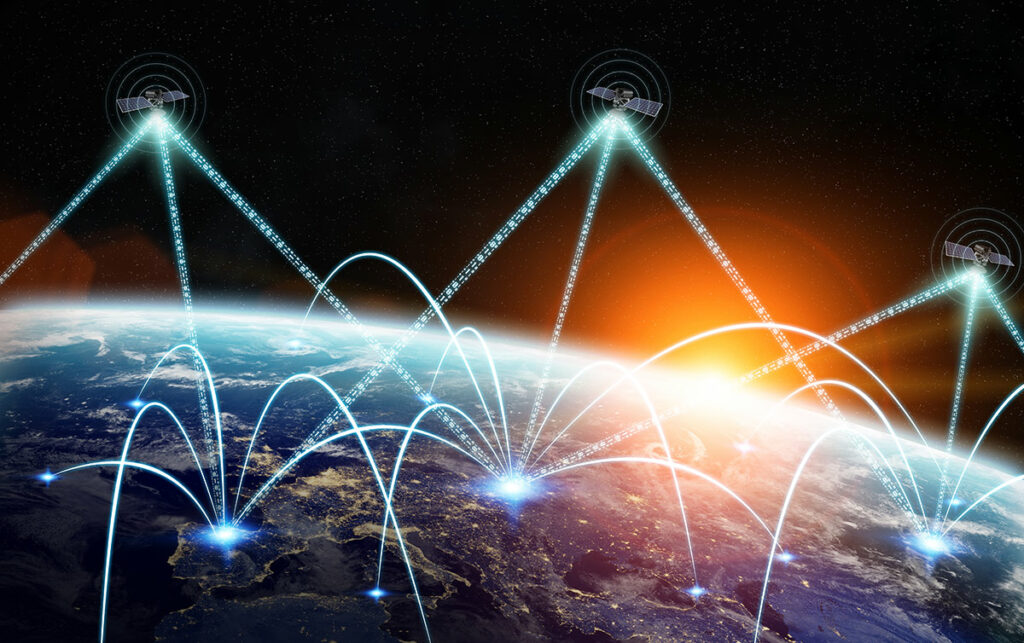The fact that the World Economic Forum’s Global Risks Report covers not only the usual topics like climate change, migration, and cybersecurity but also space in its 2022 edition might come as a surprise to readers not familiar with the topic. However, while space has become part of our critical infrastructure, it is also the theatre of a dramatic surge in commercial activities and geopolitical tensions. Over 70,000 satellites are planned to be launched in the coming decades. Because of these new activities, space has become increasingly crowded and competitive.
For decades, space exploration has inspired generations on earth. While historically, the use of space meant government activities in space, things have changed dramatically in recent years: Since the discontinuation of the US space shuttle programme in 2011, commercial activities in space have skyrocketed internationally.
Fuelled by a surge in private investment in space, new market entrants have created novel space-based services for earth (space for earth) but have also become part of other private and public sectors space missions, such as asteroid mining or the operation of space stations (space for space).
The commercially attractive orbits around earth are getting increasingly crowded.
An important factor for this development is that payload launch costs have decreased substantially over the last decade. This has enabled further commercial activity and a greater diversity of actors in Low Earth Orbit (LEO) and Medium Earth Orbit (MEO).
These less-expensive-to-reach orbits require satellite constellations to provide constant coverage over any given location on earth, as satellites are not geostationary and circle around the earth. For example, Elon Musk’s Starlink company uses over 2,400 small satellites to provide their internet-connectivity service on earth. Thus, the commercially attractive orbits around earth are getting increasingly crowded.
National space ambitions bring a growing risk of militarization
Military and civil government-led activities in space are on the rise as well. In times of increased global tensions, space has become a priority topic for many governments again. 77 nations now operate their own space agencies, and many countries have installed a space branch in their military. Five new government-developed space stations are planned to orbit earth by 2030. China has already accused the US of ignoring international treaty obligations and engaging in irresponsible and unsafe conduct in outer space after two ‘close encounters’ between its space station and satellites operated by Elon Musk’s SpaceX company.
All this is happening against a backdrop of space regulation from the cold war era, which is outdated and ambiguous in many regards and was not designed for these increased levels of activity in space. Recent results of the Global Risks Perception Survey (presented in the Global Risks Report) showed that 76% of respondents characterised the current state of international space risk mitigation efforts as either in “early development” or “not started”.
Houston, we have a sustainability problem too
However, crowding through current commercial and public space activities is not the only problem. Over a million debris objects larger than one centimetre, ranging from defunct satellites, remains of explosive bolts, to entire rocket stages, are estimated to orbit around earth. They pose a severe security threat to human space flight as well as any technology in space, as the 2016 and 2021 debris incidents at the International Space Station illustrated.
Collisions between objects could also lead to a chain reaction, called the Kessler effect, that could render entire orbital ranges unusable for generations. However, so far, there is no regulation on the pollution of space or on the removal of debris in place. This is a problem for sustainability in space.
The key problem remains that space lacks a meaningful governance structure.
The key problem remains that space lacks a meaningful governance structure. While some agreements, like the 1967 Outer Space Treaty, and intergovernmental institutions, such as the United Nations Office for Outer Space Affairs (UNOOSA) do exist, these structures are underdeveloped and not fit for the new space age.
This uncertainty in space governance is a risk for our space-based infrastructure and the further development of the commercial space sector. Space is a classic common-pool resource problem – access to space cannot be controlled, and at the same time, it is a limited resource.
Nobel-prize winner Elinor Ostrom had some useful ideas for how to address such problems where government and private sector controls tend to fail. It would be helpful if national and international bodies would take inspiration from her ideas and swiftly move forward to ensure sustainability, operational safety, and certainty for public and commercial investment in space.
